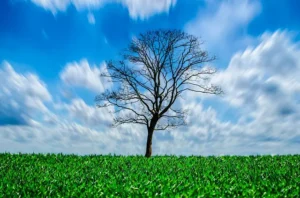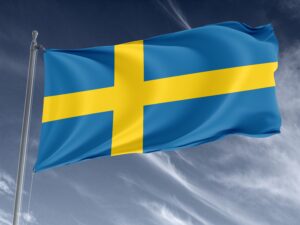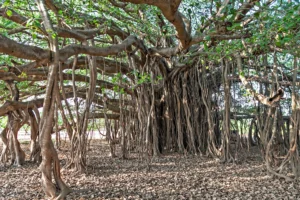Tree trimming is an essential maintenance task that helps keep trees healthy, safe, and aesthetically pleasing. Whether you’re a homeowner looking to maintain your landscape or a business owner managing property, understanding the costs associated with tree trimming is crucial. The price of trimming a tree can vary widely based on factors such as tree size, type, location, and the complexity of the job. This guide provides a comprehensive overview of the costs involved in tree trimming, breaking down average costs by tree type, exploring different trimming styles, required equipment, case studies, and government policies. Additionally, we’ll cover potential free services available for tree trimming, helping you make informed decisions for your tree care needs.
Average Cost by Tree Type
The cost of trimming a tree depends largely on the type of tree and its size. Different trees have varying growth patterns, heights, and branch densities, all of which impact the complexity and time required for trimming. Below is a table showing average costs for trimming different tree types:
| Tree Type | Small (10-20 ft) | Medium (20-40 ft) | Large (40-60 ft) | Extra Large (60+ ft) |
|---|---|---|---|---|
| Maple | $100 – $200 | $200 – $500 | $500 – $1,000 | $1,000 – $1,500 |
| Oak | $150 – $250 | $300 – $700 | $700 – $1,200 | $1,200 – $2,000 |
| Pine | $100 – $150 | $200 – $400 | $400 – $800 | $800 – $1,500 |
| Palm | $75 – $150 | $150 – $300 | $300 – $600 | $600 – $1,000 |
| Birch | $100 – $200 | $200 – $450 | $450 – $900 | $900 – $1,300 |
| Fruit Trees (e.g., Apple, Pear) | $100 – $200 | $200 – $400 | $400 – $800 | Not typically applicable |
Factors Influencing Costs:
- Tree Size: Larger trees require more time, effort, and equipment, which increases costs.
- Tree Health: Diseased or infested trees may need additional care, raising the overall price.
- Location and Accessibility: Trees close to buildings, power lines, or in difficult-to-access areas will require special handling, increasing the cost.
- Trimming Needs: Regular maintenance trims are generally less expensive than extensive corrective pruning or storm damage cleanup.
Trimming Styles
Different trimming styles serve various purposes, and the style you choose will affect the cost. Here are some common trimming styles and their typical purposes:
- Crown Thinning:
- Involves removing smaller, weak branches throughout the crown to reduce density.
- Improves air circulation, light penetration, and reduces the weight on heavy limbs.
- Commonly used for hardwood trees like oaks and maples.
- Cost: Typically 20-30% more than basic trimming due to the precision required.
- Crown Raising:
- Involves removing the lower branches of the tree to provide clearance for pedestrians, vehicles, or structures.
- Ideal for trees near walkways, driveways, or buildings.
- Cost: Generally lower than other styles, usually starting around $100-$300 depending on the tree size.
- Crown Reduction:
- Reduces the overall size of the tree by cutting back branches to a lateral branch or bud.
- Helps manage tree height and spread, especially in urban settings with height restrictions.
- Cost: Higher than basic trimming, averaging $500-$1,500 depending on the extent of reduction.
- Deadwood Removal:
- Focuses on removing dead, dying, or diseased branches to improve safety and tree health.
- Essential for preventing hazards and promoting the tree’s longevity.
- Cost: Varies based on the amount of deadwood, generally $200-$800.
- Pollarding:
- Involves cutting back branches to the main trunk to promote dense foliage at the top.
- Common for trees in urban landscapes where space is limited.
- Cost: Generally requires regular maintenance, costing $300-$1,000 depending on the tree.
- Vista Pruning:
- Trimming to create a specific view or line of sight, often used in landscaping near homes or parks.
- Cost: Varies widely, typically $150-$700 depending on the tree’s location and desired outcome.
Required Equipment
Trimming a tree requires specialized equipment to ensure safety and efficiency. Here’s a list of common tools and equipment used in tree trimming:
- Pruning Shears: For cutting small branches and twigs.
- Loppers: Ideal for medium-sized branches, providing more leverage.
- Pruning Saw: Used for larger branches that cannot be cut with shears or loppers.
- Pole Pruner: Helps reach higher branches without using a ladder.
- Chainsaw: Necessary for cutting large branches or when dealing with thick, mature trees.
- Ladder or Bucket Truck: Used to access higher parts of the tree safely.
- Safety Gear: Includes hard hats, safety glasses, gloves, and harnesses for personal protection.
- Ropes and Rigging Equipment: Used for lowering large branches safely to the ground without causing damage.
Additional Costs:
- Equipment Rental: If specialized equipment like a bucket truck is required, rental fees can add $200-$500 per day to the job cost.
- Safety Gear: Essential for preventing injuries, especially when working with sharp tools and at heights.
Case Studies
To better understand the cost dynamics of tree trimming, let’s look at some case studies that highlight various scenarios:
- Case Study 1: Residential Oak Tree in Urban Area
- Tree Type: Large Oak Tree, 50 feet tall.
- Service Required: Crown thinning and deadwood removal.
- Location: Near a residential building with power lines nearby.
- Cost Breakdown:
- Crown Thinning: $900
- Deadwood Removal: $400
- Additional cost for power line proximity: $200
- Total Cost: $1,500
- Case Study 2: Palm Trees in Commercial Property
- Tree Type: Multiple Palm Trees, 15-20 feet tall.
- Service Required: Regular maintenance trim.
- Location: Easily accessible commercial property with clear surroundings.
- Cost Breakdown:
- Trimming per tree: $100
- Number of trees: 10
- Total Cost: $1,000
- Case Study 3: Overgrown Maple Tree in Suburban Yard
- Tree Type: Medium Maple Tree, 30 feet tall.
- Service Required: Crown reduction and shaping.
- Location: Suburban yard with easy access.
- Cost Breakdown:
- Crown Reduction: $600
- Shaping: $200
- Total Cost: $800
Government Policies for Tree Trimming
Tree trimming is often regulated by local, state, or federal government policies to ensure safety, environmental protection, and adherence to community standards. Here are some common regulations and policies:
- Permits: In many areas, a permit is required to trim or remove trees, especially if the tree is considered a significant part of the landscape or is protected by local laws.
- Protected Species: Some trees, such as heritage trees or specific species like oaks, are protected, and trimming may be restricted or require special permissions.
- Utility Regulations: Trees near power lines are subject to specific trimming regulations to prevent outages and ensure safety. Utilities often conduct these trimmings or have preferred contractors.
- Environmental Protection: Regulations may prevent or limit trimming during certain times of the year, such as nesting seasons for birds or during periods of active growth to protect wildlife and tree health.
- Local Ordinances: Cities and towns may have ordinances dictating how trees can be trimmed to maintain the aesthetic appeal and safety of neighborhoods.
Free Services for Tree Trimming
In some cases, you may be eligible for free or subsidized tree trimming services. Here are a few scenarios where free services may be available:
- Utility Companies: Many utility companies offer free tree trimming for trees near power lines to prevent outages and maintain safety. Contact your local utility provider to see if you qualify.
- Local Government Programs: Some municipalities offer free or discounted tree trimming services as part of community beautification or safety programs. Check with your local city or county government for available programs.
- Non-Profit Organizations: Certain non-profits dedicated to urban forestry and environmental conservation may offer free tree trimming services to support their mission. These are often aimed at public spaces, but some programs extend to private properties.
- Neighborhood Associations: Some homeowner associations or neighborhood groups may organize free or discounted tree trimming services for their members, especially for trees affecting common areas.
- Disaster Relief Services: Following natural disasters like storms or hurricanes, government agencies or non-profits may offer free tree trimming and removal services to clear debris and ensure public safety.
Conclusion
Tree trimming is a crucial task for maintaining the health, safety, and appearance of trees in your landscape. The cost of trimming varies widely depending on tree type, size, location, and the specific trimming style required. Understanding these factors, along with the required equipment.


